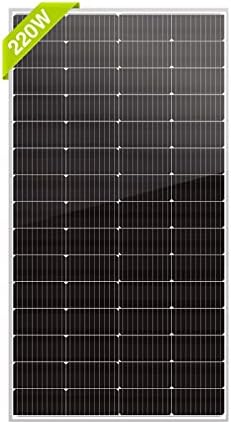### Investing in Solar: Understanding the Costs and Savings
I can still remember the first time I stood in my sun-drenched backyard, feeling the warmth on my skin while staring incredulously at an array of shiny solar panels. I had just taken the plunge into solar energy, and there was an electrifying mix of excitement and apprehension brewing inside me. Was this a wise financial move, or was I just chasing a trend? Fast forward a couple of years, and the initial doubts have been overshadowed by the impressive savings on my energy bills and the satisfaction of treading a little lighter on the planet. If you’re considering a solar investment, let’s break down the costs and savings so you can bask in all the benefits without getting lost in the numbers.
#### Why Invest in Solar?
1. **Financial Incentives**: Many states and local governments offer tax credits, rebates, and grants to incentivize solar adoption. Did you know the federal solar tax credit allows you to deduct a significant percentage of your solar installation costs from your federal taxes? That’s some fabulous green in your pocket.
2. **Electricity Savings**: Once your system is paid off, you’ll enjoy free electricity for many years. Depending on your panels’ efficiency and local sunlight conditions, that could mean significant savings—potentially thousands of dollars—over the life of your solar system.
3. **Increased Home Value**: A solar installation can increase your home’s value. Many homebuyers are now actively looking for energy-efficient features, and solar panels can be a major selling point.
4. **Environmental Impact**: Reducing your carbon footprint while creating clean, renewable energy is a win-win. It’s like investing in the planet’s future.
#### Understanding the Costs Involved
Investing in solar energy is no small decision, and grasping the initial costs is key to making an informed choice. Here’s how the numbers generally stack up:
1. **Initial Installation Cost**: The average cost of a residential solar panel installation can range from $15,000 to $25,000, depending on the size of the system and regional pricing. This includes panels, inverter, and installation fees.
2. **Ongoing Maintenance**: Solar panels require minimal maintenance, but it’s wise to set aside some funds for routine checks and cleaning. An annual thorough inspection might cost between $100 and $300.
3. **Financing Options**: There are different ways to finance your solar investment. You can pay cash, take out a loan, or lease your system. Each option has unique advantages, such as freeing up cash with a lease or building equity in your home with a loan.
4. **Inverter Replacement**: Inverters, which convert solar energy into usable power, usually need replacement every 5 to 10 years. Budgeting around $1,000 to $3,000 can help manage this expense.
5. **Insurance**: Don’t forget about homeowner’s insurance! Ensure your coverage includes your solar panels, which may add a slight increment to your payment.
6. **Hidden Costs**: Be aware of permits, inspection fees, and even possible association fees if you live under a restrictive building authority. These little expenses can add up, so factor them into your final decision.
#### Calculating Your Savings
Now that you have a clearer picture of the costs, let’s talk savings. Understanding how to calculate your financial gains will help you feel more secure about this investment.
1. **Energy Bill Reduction**: Calculate how much you currently pay per month and estimate how much of that can be offset by your solar energy production. Many homeowners report reducing their electricity bills by 50-90%.
2. **Payback Period**: Divide your total upfront costs by your annual savings. If your system costs $20,000 and you save $2,500 a year, your payback period is 8 years—a great return!
3. **Long-term Savings**: Once your system is paid off, consider the lifespan of solar panels, which is generally around 25-30 years. Most systems will continue to produce energy long after they’ve paid themselves off, meaning continued savings for your household.
4. **Rising Electricity Costs**: With electric rates steadily climbing, investing in solar now can protect you from future price increases. Locking in a low energy rate by generating your own electricity is an investment worth considering.
#### The Environmental Savings
Hopping on the solar train isn’t just about financial benefits; it’s also a way to protect our precious planet. By generating your own clean energy, you’re reducing reliance on fossil fuels and decreasing greenhouse gas emissions. To put this into perspective, a typical residential solar system can offset an equivalent of 100,000 miles driven by an average car’s emissions over its lifetime. That’s a solid positive impact!
#### Pro Tips for Your Solar Journey
1. **Do Your Research**: Investigate different solar providers and compare quotes. Finding a trustworthy company with good reviews can lead to a smoother installation process.
2. **Go for Quality**: While budget panels might seem appealing, investing in high-quality solar panels can yield better long-term performance and durability.
3. **Understand Your Energy Needs**: Evaluate your energy consumption. Knowing your average monthly usage helps in designing a system that meets your specific needs.
4. **Stay Updated on Incentives**: Tax credits and rebates can change yearly. Staying informed will help you maximize those incentives.
5. **Consider Battery Storage**: If powered off-grid, complementing your system with battery storage allows you to use energy even when the sun isn’t shining—especially beneficial in areas with limited grid access.
6. **Think Long-term**: Examine the long-term benefits versus short-term costs. Solar is a marathon, not a sprint.
#### Conclusion
Investing in solar is not just a practical financial choice; it’s a significant step toward energy independence and environmental stewardship. By weighing the initial costs against potential savings and environmental impact, you can navigate this transformative journey with confidence. You might just find yourself standing in your sunlit yard, smiling at the savings and the serenity of knowing you’re making a positive difference.
So, whether you’re ready to ditch the grid or simply want to lower your electricity bills, embracing solar energy could be one of the best decisions you make. With the right knowledge and a sprinkle of patience, you’ll be basking in the glow of your solar investment for years to come!



